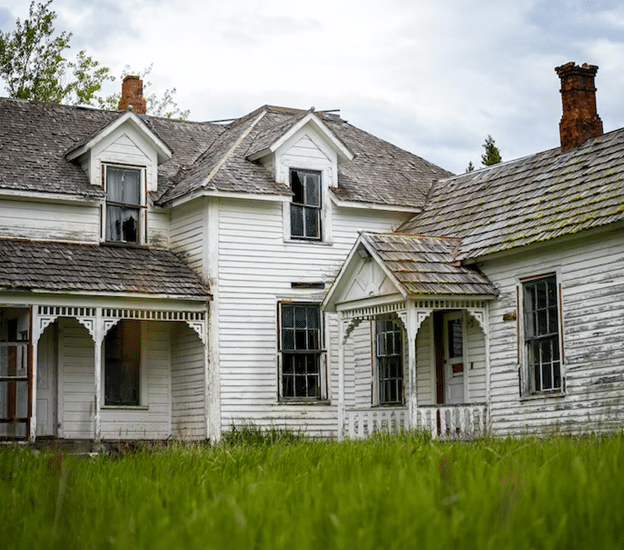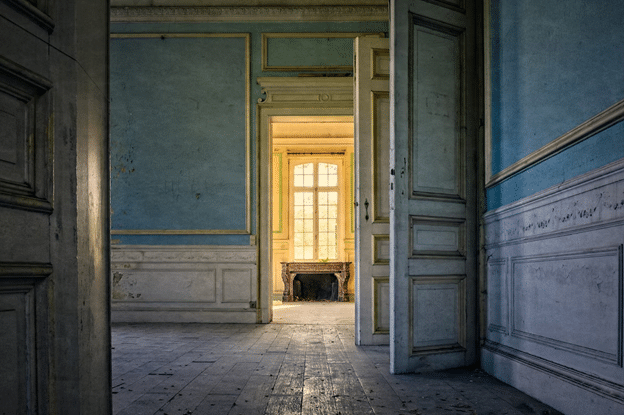Renovating an old house is a journey that combines the allure of history with the excitement of transformation. It’s a chance to breathe new life into a structure that has stood the test of time, preserving its character while infusing it with modern comfort. Yet, this endeavor is not without its challenges. Renovating an old house requires careful planning, meticulous research, and a keen eye for balancing preservation and modernization. In this blog, we’ll explore four essential aspects to consider when embarking on the journey of renovating an old house.

1. Historical Research and Preservation
Every old house has a story to tell, a history etched into its walls and architecture. Before embarking on renovations, it’s crucial to delve into the house’s past to better understand its significance and unique features. Uncovering historical details can guide your renovation decisions, helping you preserve the essence of the house.
Start by researching local archives, historical societies, and even old photographs. These sources can provide valuable insights into the house’s original design, the era it was built in, and any historical events associated with it. With this information, you can make informed decisions about which features to preserve and restore.
Preservation is not just about maintaining the physical elements of the house; it’s about keeping its spirit alive. Original hardwood floors, intricate molding, and stained glass windows—these are all treasures that can add charm and character to your renovated space. By embracing these elements, you’re not only paying homage to the past but also infusing your home with a sense of authenticity that modern designs often lack.
2. Structural Assessment and Repairs
The foundation of any successful renovation is a solid structure. Old houses, however, can come with a host of structural challenges due to years of wear and tear. Before diving into any aesthetic upgrades, it’s crucial to have a professional structural assessment done.
Common issues in old houses include foundation problems, sagging floors, and roof deterioration. These issues, if not addressed, can undermine the integrity of your renovation efforts. This is where the expertise of a qualified structural engineer or contractor comes into play. Their trained eye can identify issues like foundation problems, sagging floors, and compromised roofs that may not be immediately visible. Through this assessment, they provide you with a clear picture of the necessary repairs and enhancements needed to ensure your renovation efforts stand strong for years to come.
One crucial aspect of structural assessment is evaluating the plumbing system, which is often overlooked. If your old house is located in Perth, where vintage properties abound, finding the best pipe relining in Perth becomes paramount. Plumbing systems in older houses can be prone to deterioration and leaks over time. Traditional pipe replacement can be invasive, requiring extensive excavation and disruption to your renovation project.
This is where modern pipe relining techniques shine. A good pipe relining involves using innovative materials to create a new, durable pipe within the existing one, without the need for extensive excavation. This approach not only preserves your landscaping and minimizes disruptions but also enhances your plumbing system’s overall efficiency and longevity. It’s a perfect example of how modern solutions can seamlessly integrate with the preservation needs of an old house.
3. Modernizing While Maintaining Character
The art of renovating an old house lies in the delicate balance between modernization and the preservation of its unique character. It’s a dance that requires finesse and a deep understanding of the house’s history and architectural elements. While modern conveniences and aesthetics can enhance your living experience, it’s essential to tread lightly to ensure the soul of the house remains intact.
One approach to modernizing an old house is through updating its electrical and plumbing systems. As technology advances, so do our power and water needs. However, this doesn’t mean sacrificing the authenticity of your home. Integrating modern electrical wiring and plumbing pipes can be done discreetly, allowing you to enjoy modern functionality without compromising the house’s appearance.
Insulation is another aspect where modernization can significantly impact comfort without altering the house’s exterior. Energy-efficient insulation materials can be seamlessly installed within walls, attics, and floors, ensuring that your historic home remains cozy while reducing energy consumption.
Kitchens and bathrooms often require modern upgrades due to changes in lifestyle and hygiene standards. Here, you have an opportunity to showcase your ability to blend old-world charm with contemporary design. Opt for period-appropriate fixtures, tiles, and cabinetry to create a harmonious fusion of eras. This approach not only respects the house’s heritage but also celebrates it in a way that enriches your everyday life.
4. Budgeting and Time Management
Renovating an old house is an exciting endeavor, but it’s not without its challenges, particularly in terms of budgeting and time management. As you embark on this journey of transformation, it’s crucial to approach it with a clear understanding of your financial limits and a well-structured timeline.
Budgeting
Creating a realistic budget is the foundation of a successful renovation project. Old houses often come with unexpected surprises, and these can quickly impact your financial plan if not accounted for. When budgeting for your renovation, consider the following:
- Research and Planning: Invest time in researching materials, labor costs, and any potential restoration specialists. This upfront research can help you form a more accurate budget.
- Contingency Fund: Allocate a portion of your budget for unforeseen expenses. A common guideline is to set aside around 10-20% of the total budget for contingencies.
- Prioritization: Determine which aspects of the renovation are non-negotiable and allocate funds accordingly. This prevents overspending on less important features.
- Quotes and Estimates: Obtain multiple quotes from contractors and suppliers to ensure you’re getting a fair price for your renovation materials and services.
- Trade-Offs: Be prepared to make trade-offs if certain aspects of the renovation exceed your budget. Flexibility is essential to stay within your financial limits.
Time Management
Time management is equally vital to the success of your renovation project. A well-structured timeline helps you avoid unnecessary delays and ensures a smoother process overall.
- Phases and Milestones: Divide your renovation project into phases and set milestones for each. This gives you a clear roadmap and helps you track progress.
- Realistic Expectations: Understand that renovating an old house might take longer than modern construction due to unexpected challenges and the need for specialized work.
- Scheduling: Coordinate with contractors, specialists, and suppliers to create a comprehensive schedule. Clear communication helps prevent bottlenecks.
- Prioritization: Determine which aspects of the renovation need to be completed before others. For instance, structural repairs should come before aesthetic upgrades.
- Flexibility: While a well-structured timeline is important, also be prepared for the unexpected. Weather, unforeseen issues, and supply delays can impact your schedule.

Renovating an old house is a journey that requires a blend of creativity, preservation, and modernization. You can transform a vintage property into a timeless masterpiece by delving into its history, addressing structural concerns, balancing old-world charm with modern amenities, and managing your budget and timeline. As you embark on this rewarding journey, remember that every decision you make contributes to the story of the house, ensuring its legacy for generations to come.

